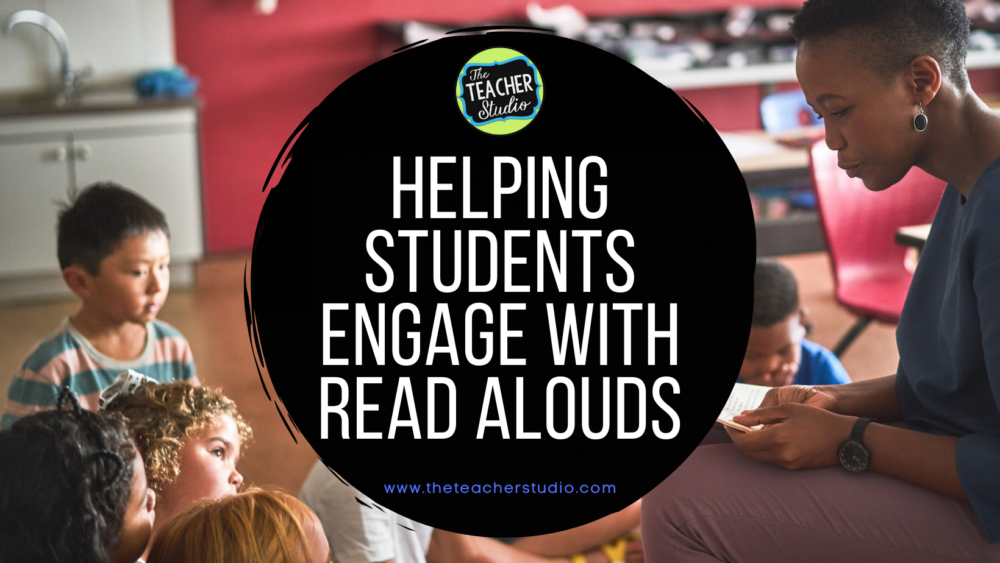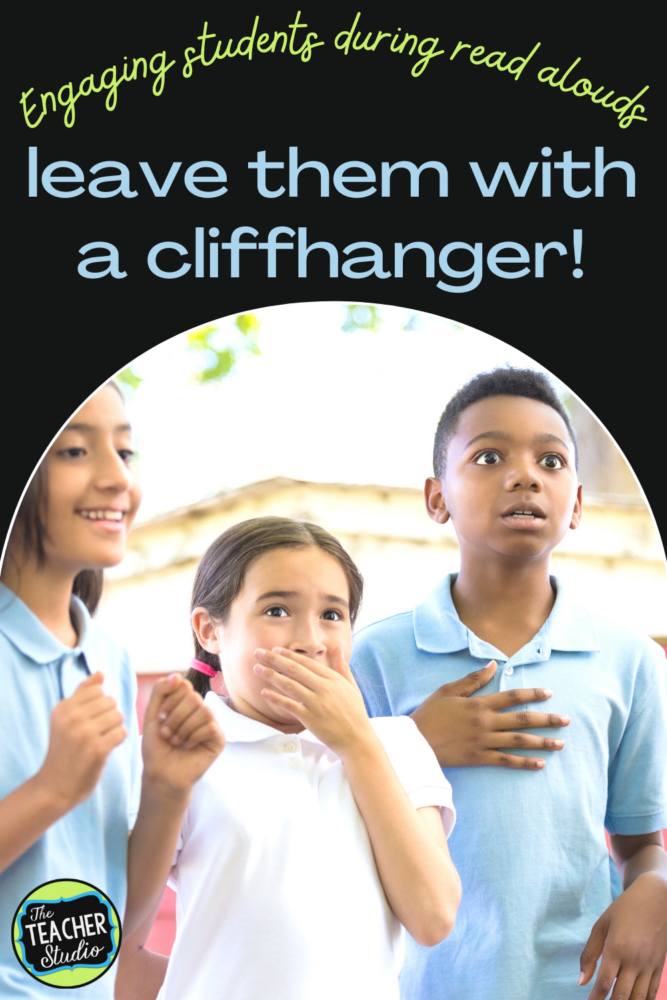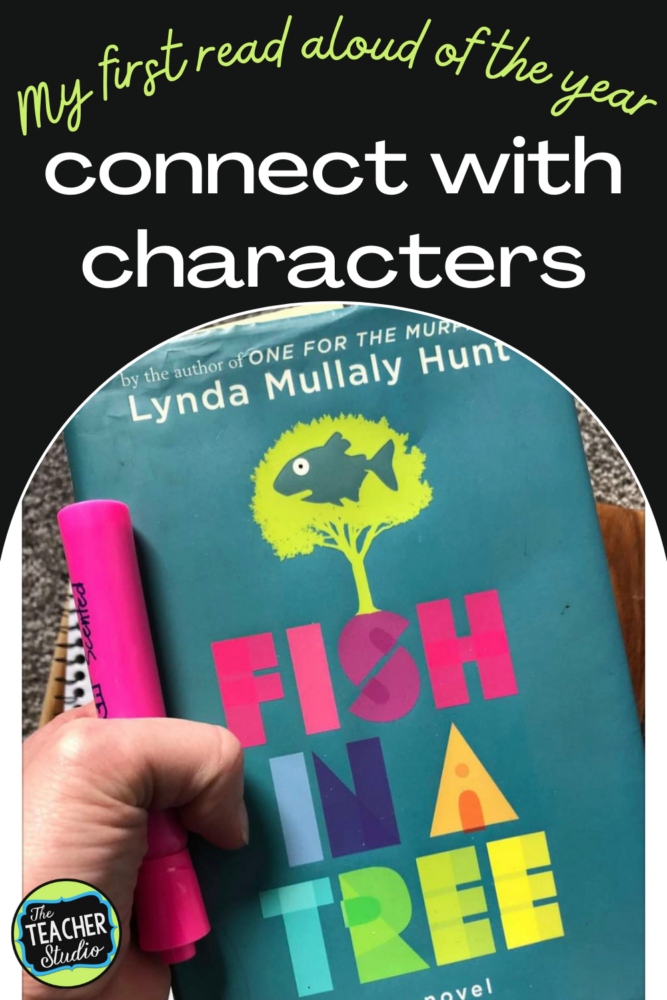Selecting amazing read alouds can be a fun yet daunting task. There are so many top-notch books…and it’s sometimes hard to choose. We often rely on our “oldies but goodies”, and that’s a great approach when you have something that is tested and effective. Sometimes, however, it’s fun to try something new
I can’t lie–I ALWAYS start my year by reading Fish in a Tree (and here’s a blog post explaining why!). The rest of my read alouds are up for grabs! I do want to make sure they have a purpose, however. I choose the books to either highlight something we are working on, or help us solve a problem we are having, or sometimes just for fun!
There are so many amazing books, but there are some books that just don’t seem to have the same “power” when read aloud. Finding books that truly engage students is so important, but there are things we can do to help them stay glued to our every word!
Voice and expression in read alouds
Let’s start with the basics. We’ve all been in lectures or meetings where the speaker droned on and on. If you aren’t sure how your voice sounds when you read, record yourself! It’s best to do with video. Watch your facial expressions and intonation. This is your chance to be a drama queen!
I love to change my voice depending on the character–if there is a gruff old man, I’m a gruff old man! If a middle school girl is a whiny brat–so am I. Life goal? When you tell the students you are having a sub the next day and they say, “Don’t let her read the next chapter–she won’t do it right.”
It matters. It’s worth being brave enough to step outside your comfort zone.
Tracking our thinking
One way to keep students engaged is to have a system where you track thinking as you go. Having a visible chart that you interact with is a way to help students refer to the book when discussing and helps them think about things in a deeper way.
With Fish in a Tree, my first “tracking” chart is simply the characters. We add them to the chart as we encounter them, add details about them, and then draw lines to make connections between characters. Of course, as the book unfolds, sometimes we get new information to add, and sometimes we have to make changes. It’s a work in progress!
For other books, I track different things. Sometimes we track key events. Sometimes we rewrite chapter titles and have great discussions about what might be an appropriate title. Other times I’ve simply tracked predictions we make. The point is simple: By making something visual, we immediately reach some students who might not respond to the only auditory nature of a read aloud.
Think about ways to track–and revise–your thinking with your next book!
[one-half-first]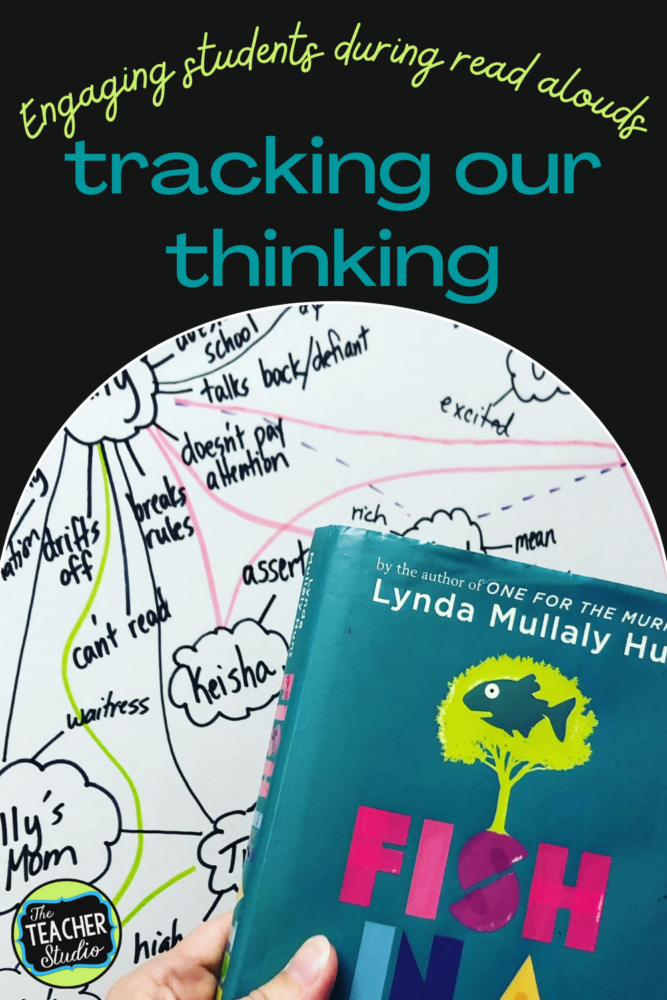 [/one-half-first]
[/one-half-first]
[one-half]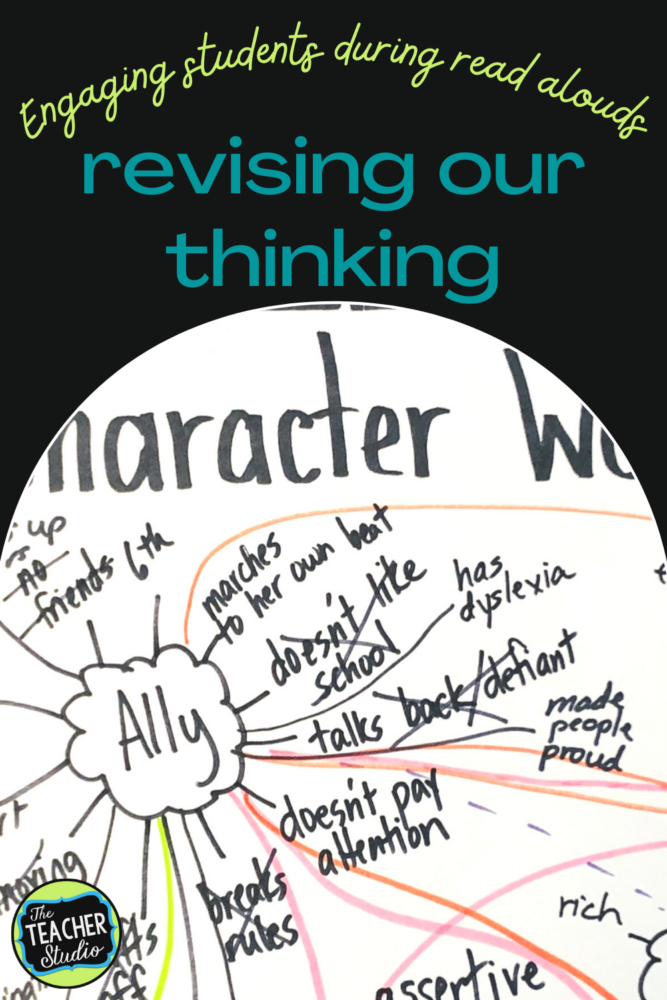 [/one-half]
[/one-half]
Cliffhangers
One of the best feelings I get as a teacher is when I close my read aloud and hear the collective GROANS of the students who want me to read “just a little bit more”!
When we pick books that evoke that feeling, we are doing our job. It is also a great time to help students realize that THEY should be looking for that feeling with the books they choose! They should WANT to read on and see what happens. I call it being in the “reading zone”–and if they aren’t getting that feeling, maybe they aren’t picking the right books! Model that thinking as much as you can.
Read alouds with powerful characters
When I am choosing books, I am very mindful of the characters. I want to share books with diverse characters–a mix of genders, races, interests, and struggles. We want ALL our students to be able to “see” themselves in the books we choose. Because we have 24 different little humans in our classrooms, we need to provide a variety of characters for them to connect with.
By choosing powerful characters who go through powerful experiences, struggles, and successes, it gives us the opportunity to discuss these situations. When students can see characters (like Ally in Fish in a Tree) going through a tough time and learning a lesson from it–we never know how much they internalize it.
The discussions we have with our read alouds can be priceless. That’s why when I create novel studies to go with books, THIS is what I focus on! Students don’t need word searches and busy work related to our read alouds; they need to dig deep, talk about issues, connect with characters, and grow as people.
Prolific authors and series books
When we use our read alouds as “gateway” books, we can see their impact go well beyond our instruction. Whether it be through book talks, read alouds, first chapter only reads (where I read just ONE chapter to try to hook the kids!)–choosing books that can capture readers is key.
I love to read the first book of a series. I can do this with my read alouds or in book groups. It not only helps more reluctant readers by introducing them to the characters and the “situation”. Series books are also totally contagious…when you build anticipation, kids get hooked. I love having to have a “next up!” list for students waiting for that next book.
Introducing students to authors who don’t write series but have great books is also key. After I read Fish in a Tree, I introduce all the other books that I have by Lynda Mullaly Hunt and put them in a special place in the room so students can give them a try. Sometimes I even make a “wall of fame” where anyone can sign their name after reading a book by that author. Just use a piece of big paper, put a label on it, and hang it up! I like to use little cut-out stars or awards for students to fill out when they add their names.
Read alouds are so powerful!
Hopefully, you have gotten a tip or two today! Again, there are so many amazing books. If you have NOT read Fish in a Tree, I encourage you to give it a try. As I mentioned above, I do have another blog post with more details about it RIGHT HERE. I have created a pretty in-depth novel guide to use with it if you are interested, and due to popular request–a companion for “after you read” with some fun, culminating activities. Just CLICK HERE to see what I mean. We seriously refer to this book and its characters all year long. It’s a keeper.

